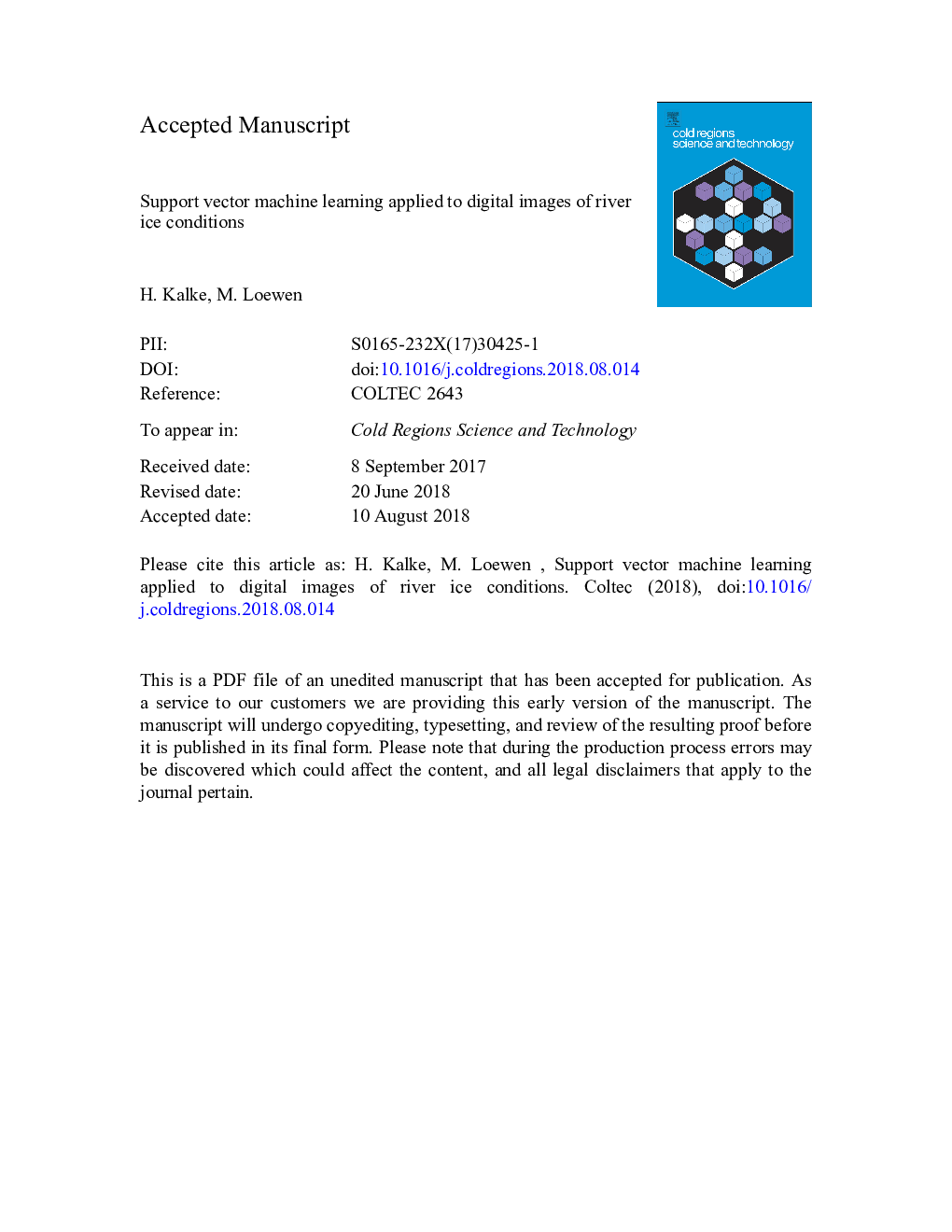| Article ID | Journal | Published Year | Pages | File Type |
|---|---|---|---|---|
| 8906362 | Cold Regions Science and Technology | 2018 | 48 Pages |
Abstract
In this study the use of support vector machines (SVM), a popular type of machine learning algorithm, for monitoring river ice properties during freeze-up was investigated. The goal was to develop an automated image processing method that could be used to accurately compute the total surface ice concentration and also discriminate between frazil and released floating anchor ice pans. Total surface ice concentration has previously been computed from digital images of surface ice conditions using the most common image segmentation method, thresholding. However, thresholding techniques often produce inaccurate results or if performed manually can be highly subjective and labour intensive. Three site specific SVM models were trained in this study to accurately distinguish between surface ice and water, and produce binary images from which the total surface ice concentration could be computed. The digital images of river ice conditions were acquired using bridge-mounted game cameras and an unmanned aerial vehicle on two Alberta rivers. The total surface ice concentrations computed from the SVM generated binary images were significantly more accurate than concentrations computed using four thresholding methods. The trained SVM models were then used to compute spatial distributions of surface ice concentration across the two rivers from the UAV images. In addition, time-series of surface ice concentrations during freeze-up were also computed from the bridge-mounted game camera images. Site specific SVM models for estimating surface ice concentration were shown to be a feasible and accurate tool for river ice monitoring that could potentially aid in the validation of numerical models and improve understanding of river freeze-up processes. An SVM to separate total surface ice into frazil and anchor ice components was also trained and validated. This model produced mixed results when tested on images from two anchor ice release events and additional research is needed to more fully assess its potential.
Related Topics
Physical Sciences and Engineering
Earth and Planetary Sciences
Earth and Planetary Sciences (General)
Authors
H. Kalke, M. Loewen,
